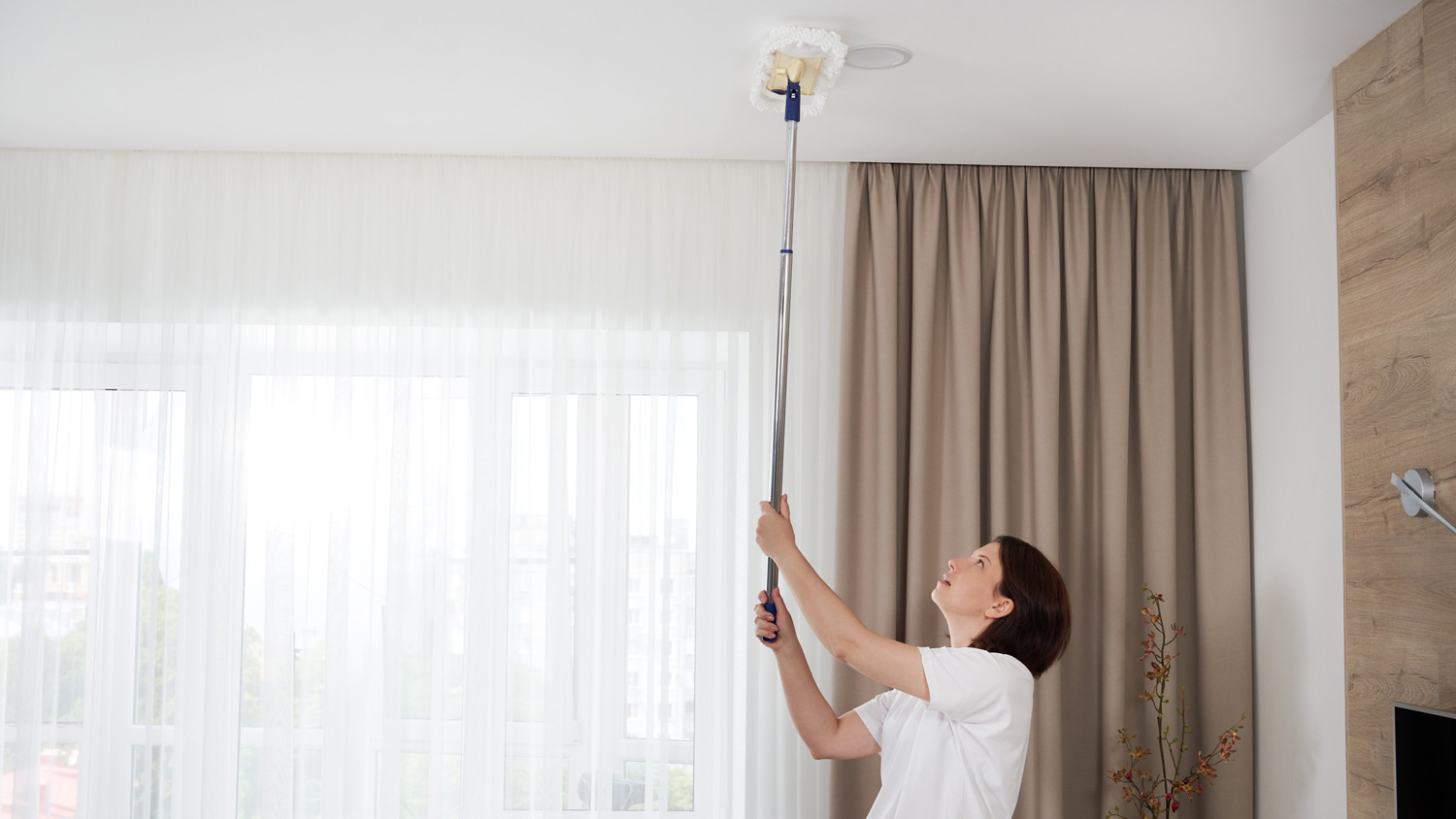
Mattress cleaning cost depends on the number of mattresses being cleaned and the size of each. Use this guide to better understand mattress cleaning prices.
Refresh your space with clean drapes


Adding curtains or drapes to your windows pulls all of your home decor together. It’s safe to say that window treatments are must-have accent pieces. But like anything in your home, window treatments collect dirt and dust over time, which can exacerbate allergies and make your home look drab. Learn how to clean curtains in this easy DIY guide to refresh your dirty curtains and drapes.
Your first step to cleaning your curtains is to take them down and make sure none of the hardware—curtain rods, caps, or hooks—are caught up in fabric. If you or someone in your home is sensitive to dust or other allergens that might be hanging out in the curtains, consider giving them a quick vacuum before taking them down to reduce how much dust and dirt are released in the air.
Once you have your curtains down, check the tags to make sure the material is safe to wash. The manufacturer may recommend dry cleaning, hand-washing, steaming, or tossing in the washer at home. It’s always best to follow these instructions to keep your curtains and drapes in good shape. If the tags are missing or you’re unsure if your particular detergent is safe to use on your curtains, test a small, inconspicuous section of the curtain before washing the entire thing in your washing machine.

Curtains get first-row access to the best views, but they can accumulate quite a bit of dust. Once you remove them from your curtain rods, make sure to take your curtains outside and shake them before you start the washing process. If you expect that the curtains are full of dust, dirt, pet hair, or pet dander, you can even vacuum them briefly before taking this step.
Dirty fingers, greasy food, and accidental juice spills tend to leave visible stains on curtains and drapes. Before washing them, spot-treat each individual mark using these stain removal tips to get rid of them once and for all. Or consider taking delicates to a drapery cleaner near you to remove stains without damaging what might be delicate fabric.

Once you’ve treated the stains, it’s time to wash your window treatments. Again, follow the care instructions on your item. The most common curtain and drape materials are cotton, polyester, linen, rayon, and silk. You can usually safely machine-wash cotton, polyester, linen, and rayon, but you may need to dry clean or hand-wash silk and other delicates.
If your curtains or drapes are suitable for machine washing, wash them on a gentle cycle and only use cool water. Use a small amount of mild laundry detergent and wash your window treatments by themselves, not with the rest of your laundry. You want to give them plenty of room to tumble and agitate in the washing machine and get thoroughly clean.
Depending on what fabric they’re made from, you may need to hang your curtains to dry after cleaning them. If that’s the case, hang them on a clothesline outside on a sunny day for a few hours, or hang them over your shower rod with the bathroom fan on overnight or until they’re completely dry.
If the item’s care instructions say they can handle a machine dryer, you can toss them in on low heat to speed up the process. Take them out when they’re mostly (but not completely dry) to prevent wrinkles.

It’s almost impossible to completely avoid wrinkles when cleaning your curtains and drapes. Set an iron to the appropriate setting for the type of fabric you’re ironing, and carefully slide it along the window treatment to smooth out any wrinkles. They’ll still likely be slightly damp at this stage, which is what you want.
Once you’re done ironing, hang the curtains or drapes up and allow them to dry completely. You’ll be left with fresh, wrinkle-free window treatments.
Ultimately, the difficulty of cleaning your window treatments and whether you should DIY the cleaning depends on their material. Cotton and synthetic curtains are generally easy to clean because they can stand up to machine washers and dryers in most cases, meaning little effort is required on your part.
On the other hand, curtains or drapes made from silk, chenille, or velvet need some extra attention and may require hand-washing or dry cleaning. In that case, we recommend you hire a drapery cleaning service or pay for the cost of a house cleaning service to take care of it.
Additionally, if you don’t have time or don’t want to risk damaging materials that don’t have clear how-to-wash instructions, hiring a pro is always a good option and will save you time in the long run. Drapery cleaning costs around $100 per set—or a bit more if you also need to clean blinds—but it’s worth it if the alternative means you might ruin your curtains and have to buy and hang new curtains.
Lauren Murphy contributed to this piece.
From average costs to expert advice, get all the answers you need to get your job done.

Mattress cleaning cost depends on the number of mattresses being cleaned and the size of each. Use this guide to better understand mattress cleaning prices.

Cleanout cost may be one of your first thoughts when left in charge of an estate. We walk through factors to expect, the professional estate cleanout services cost, and ways to save.

Discover the average acoustic ceiling cleaning cost, what affects pricing, and how to save. Get expert tips to budget for your acoustic ceiling cleaning project.

Follow this guide to learn when and how to steam clean walls in your home. When the wall surface is suitable, it’s an easy, chemical-free way to sanitize.

If you’re someone who hates breaking out the vacuum and mop, hiring a house cleaning service can be a major time-saver. Here are some tips for hiring the best pro for your space.

Wondering, “Why is my floor dirty even after mopping?” Learn why this issue is happening, how to prevent it, and when to call a professional cleaner.